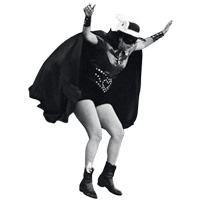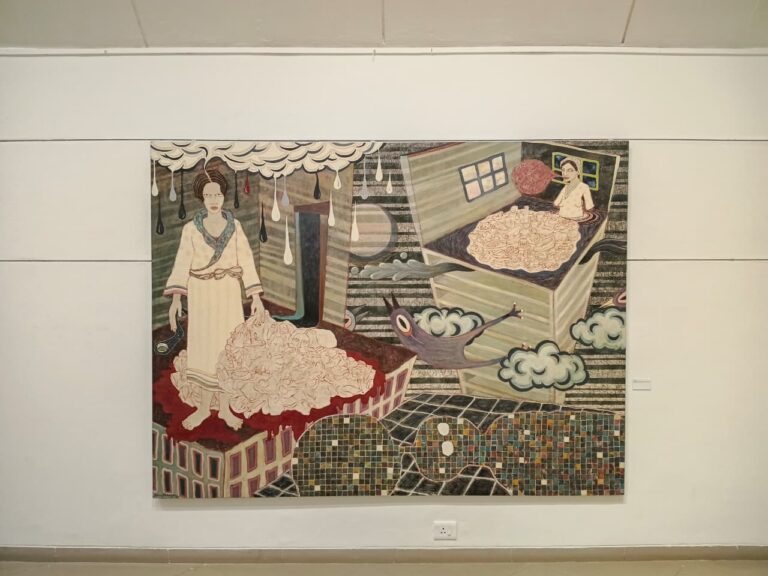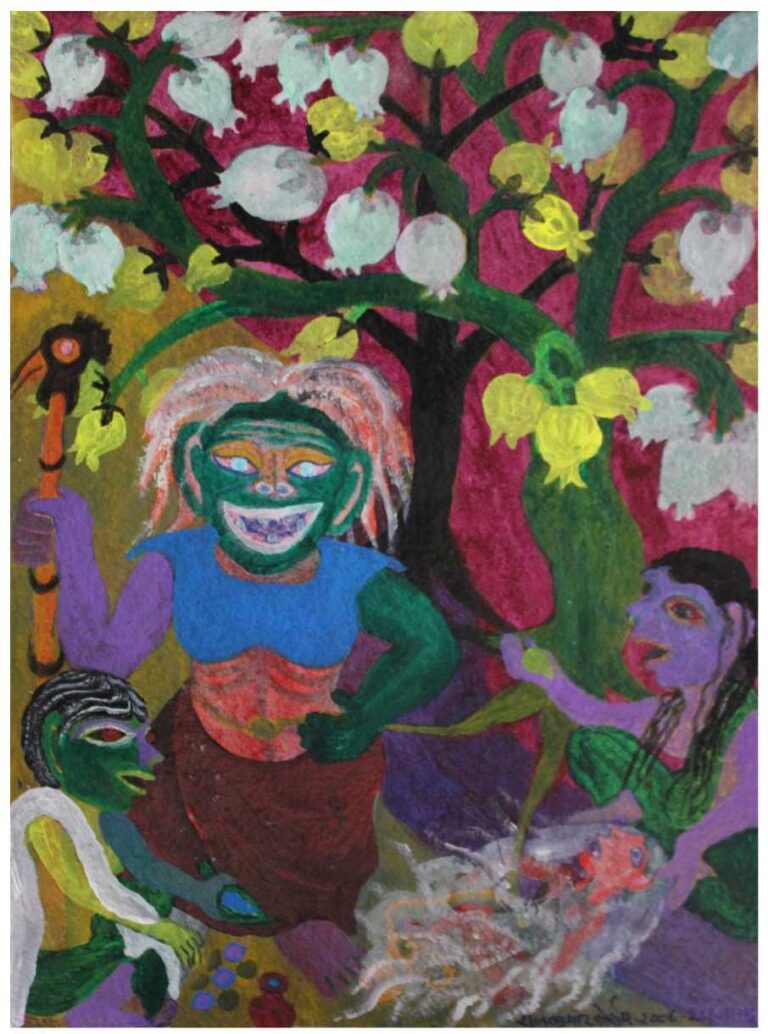The air is thick with identity controversies which seem to manifest themselves over statues and monuments. The Phantom Lady ponders.

If you wander about the city of Bangalore, you will be surprised to find many of its public statues wrapped with cloth as if a local Christo had been hard at work. One of these was the statue of the Tamil saint poet Thiruvalluvar near the Ulsoor Lake erected by the Tamil Sangham. Ulsoor is a Tamil area, and hostilities have existed ever since the British, after the defeat of Tipu, created the largest cantonment in India in Bangalore and populated it with Tamils to counter the Kannada speaking city area under the Maharaja of Mysore. These hostilities have worsened lately with Kaveri water disputes. Kannada nationalists would not allow the statue to be unveiled, and Thiruvalluvar has remained a ‘conceptual’ work for eighteen years till a statue of the Kannada saint poet Sarvagna was put up in Chennai. Both were inaugurated in close sequence recently in a great demonstration of what was called ‘statue diplomacy’, and considered a momentous step in the strained inter-state politics by all.
The Tamils are great forerunners in many matters cultural, and the Dravidian and pure Tamil movements created a strong self-identity. Chennai itself is a city mapped by its statues of Tamil heroes. They say if you asked someone for directions there he would say – go past the Anna statue and turn left at the Kamaraj Statue – and so on. The Marina beach has large memorials on its sands dedicated to Annadurai, MGR etc. (On the pavement of the beach is also one of the most famous works of modern art in the city, Debi Prasad Roy Chowdhury’s bronze sculpture, Triumph of Labour). NTR as chief minister of Andhra installed a row of bronze statues of Telugu heroes on the Tank Bund Road in Hyderabad, and the joke goes that they all look like him in various roles as a film actor, including the woman poet. The twenty two metre great granite Buddha which sank once, but has been safely installed now in the centre of the Husain Sagar Lake, is also said to bear a close resemblance to him.

Mumbai, being larger and richer than any of these cities, has planned to build a 350 crore Shivaji monument outdoing the Statue of Liberty, standing on its own island in the sea. The irony, as Girish Shahane writes, is that while Liberty is a universal symbol of freedom and democracy, Shivaji has been co-opted as a mascot for Hindu/ Marathi identity politics and has become a symbol of divisiveness. Mayawati’s agenda is more ambitious; she is erecting statues of herself and Dalit icons on twenty four memorial sites in the state of Uttar Pradesh. A front-page case has been going on in the Supreme Court to stop the construction work on public money. So what is the real opposition to Mayawati’s memorial building – its lavish use of government money, that she is a ‘heroine’ and not a ‘hero’, its Vanitas;or the fact that it is going to be a place of Dalit identity, where there is none other? Or are both purposes so inextricably mixed like good and evil in our complicated times, that we cannot separate them?

After the first heady idealistic days of early independence, making political statues has become embarrassing for contemporary artists. The language of contemporary art is anti-establishment, while the public demand is for idealised neo-classical representations. Then who makes these statues? The good sculptors are usually trained in the big art schools and specialise in making political portraits, or are from traditional families of sculptors. Some time ago I visited a factory near Gwalior which takes orders to make political statues from most of North India. As a busload of us approached, we saw acres and acres of spectacular rolling hillocks, set with dramatic groups of figures of political leaders all gesturing into the air in their characteristic poses: Netaji Bose, Rajiv Gandhi, Indira, Nehru, Dr Ambedkar, Bhagat Singh, Jhansi Ki Rani, Mahatma Gandhi. It was an amazing sight: the heroes, the vast sky, the bare landscape, and the larger than life tableaux in various perspectives in the clear light of the panoramic view. The factory makes fibre-glass casts first from the clay models, then takes moulds from them and casts them in bronze. The waste fibre-glass models are then placed on the site, making a kind of unmeant installation of dark post-modernist satire.

Who then can be the heroes of our times, and how can we celebrate their lives?
I recently saw The Advocate, a film made by DeepaDhanraj on the Hyderabad lawyer KG Kannabiran, one of the founders of the human rights and civil liberties movements in India, a man who has spent a lifetime challenging the Indian State to uphold justice. While the first part of the film is a biography and history dominated by his charismatic presence, the second half, with interviews with his wife and colleagues, contains a critique. He is never shown larger than life, but as passionate, hardworking, brilliantly analytical, firm in his beliefs and relentlessly persistent. His wife, prominent in the women’s movement herself, critiques him for his lack of interest in women’s issues as being central to human rights; his colleagues, for other weaknesses in his thinking and practice. But finally, the film in both its parts makes a monumental plea for a way of life that is serious minded and committed to social justice, lit up with an intense life-energy. At a time of extreme hysteria over icons and symbols, the biography shows that a reasoned analysis and historical sense need not belittle, nor aggrandise, an exemplary life.















